Twenty years ago tonight, close to midnight, at the very precipice of the last millennium, Catherine and I conceived a child.
That night in 1999 we toasted Y2K with a bottle of Henkell, a gift from Mrs. Hennessey.
Tonight Catherine is in hospital and in a bad way; it’s an enormously anxious and stressful time for all of us. But that child we conceived is 19 years old and here beside me as we forge on, and that ain’t nothing.
So tonight we take a moment to toast Catherine, and each other, and 2020 with all that it holds, good and bad. With a bottle of Henkell. A gift from Mrs. Hennessey.
Happy New Decade.
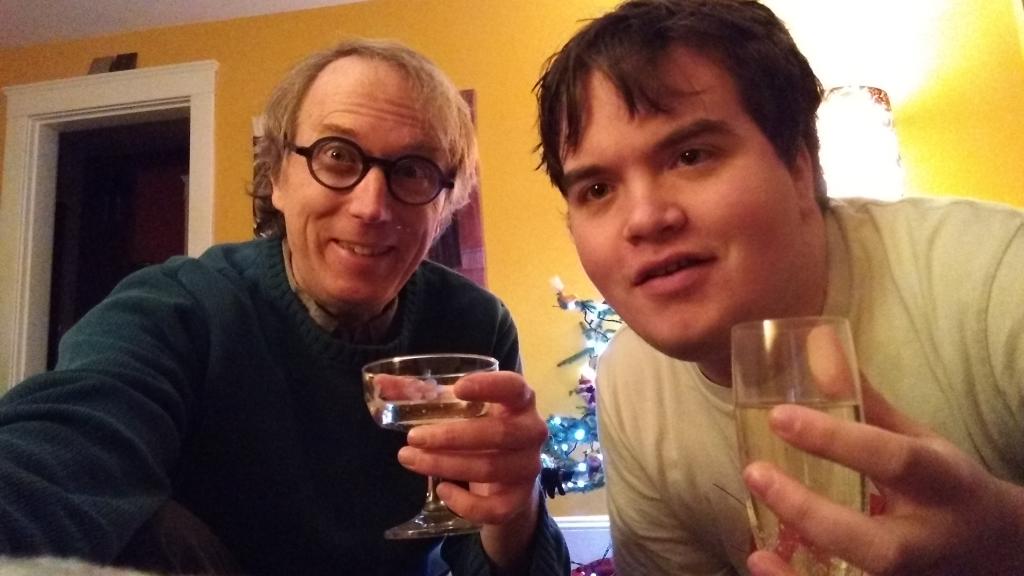
My father was an early adopter of personal computers, and I inherited a “learn to do by doing” ethic from him in this regard: neither of us had any formal computer training, we just hit our head against the wall until we knew what to do.
There was no greater expression of this than Beach Changes, a computer-animated film that Dad created in 1985 for the open house at the Canada Centre for Inland Waters. I found a copy of the film on an old server, and save it here for posterity. As you watch it, remember that this was all created on a TRS-80 Color Computer from Radio Shack, painstakingly animated in BASIC, letter by letter by letter. And, what with CCIW being a federal agency, in both English and French.
The heart of the matter, starting at 2:30, is a series of photos of the shore of Lake Ontario taken between 1980 and 1982, illustrating, like the tin says, beach changes over the seasons.
The music is from Moe Koffman’s jazz rendition of The Four Seasons (GRT, 1972).
The week that I was home in Ontario for my father’s death in November I packed up a box of things from his office and workshop that I wanted to remember him by. That office and that workshop were perhaps the truest manifestations of who Dad was: packed full of things that might one day be useful, extremely well organized, and kind of weird. I had no more emotional moment that week than when I entered his office for the first time after he died, seeing it exactly as he left it; it was sacred space, with his atoms still swirling around. I had to leave and come back the next day.
By the end of the week I’d filled the box I’d found in the basement (Dad was nothing if not a compulsive saver of cardboard boxes–a trait I have inherited). The box arrived in the mail today, courtesy of brother Mike’s postal prowess, and before its contents got scattered to the corners of my office, I took photos of everything, and thus am able to present here a Museum of Norm.
Door Sign
For years and years and years Dad had an index card taped to his office door at the Canada Centre for Inland Waters with a pointer that he could rotate to indicate where he was when he wasn’t in his office. It bears the marks of much use, and many edits, and it’s lost its pointer, but it survived:
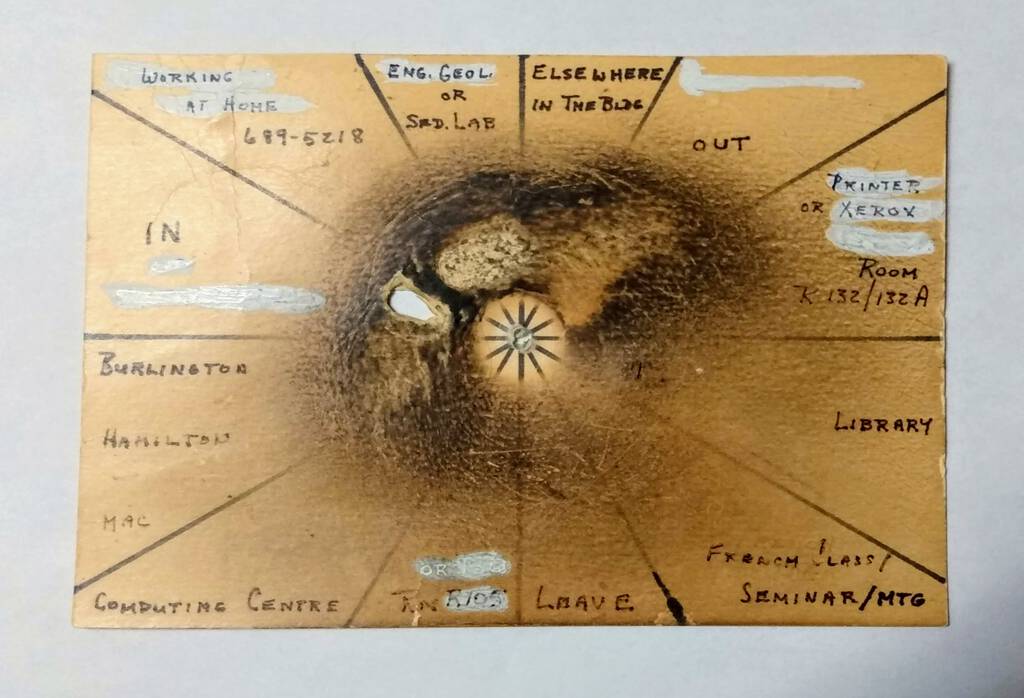
Here are the places Dad could be that weren’t his office (clockwise from top-left):
- Working at Home (689-5218) – that was our home phone number in Carlisle; I still sometimes call it even though my parents moved. and their phone number changed.
- Eng. Geol. or Srd. Lab
- Elswhere in the Bldg.
- Out
- Printer or Xerox Room, R132/132A
- Library
- French Class/Seminar/Mtg.
- Leave
- Room R105
- Computing Centre
- Burlington, Hamilton, Mac – Mac was McMaster University
- In
This is my most treasured artifact.
Business Cards
Dad spent his entire career working for the federal government at the Canada Centre for Inland Waters in Burlington, Ontario. Over the 30+ years he spent there as research scientist, his practice of nearshore sedimentology was organized under a variety of sections and divisions. Here are a selection of his business cards reflecting those changes:
Geolimnology Section, Lakes Division
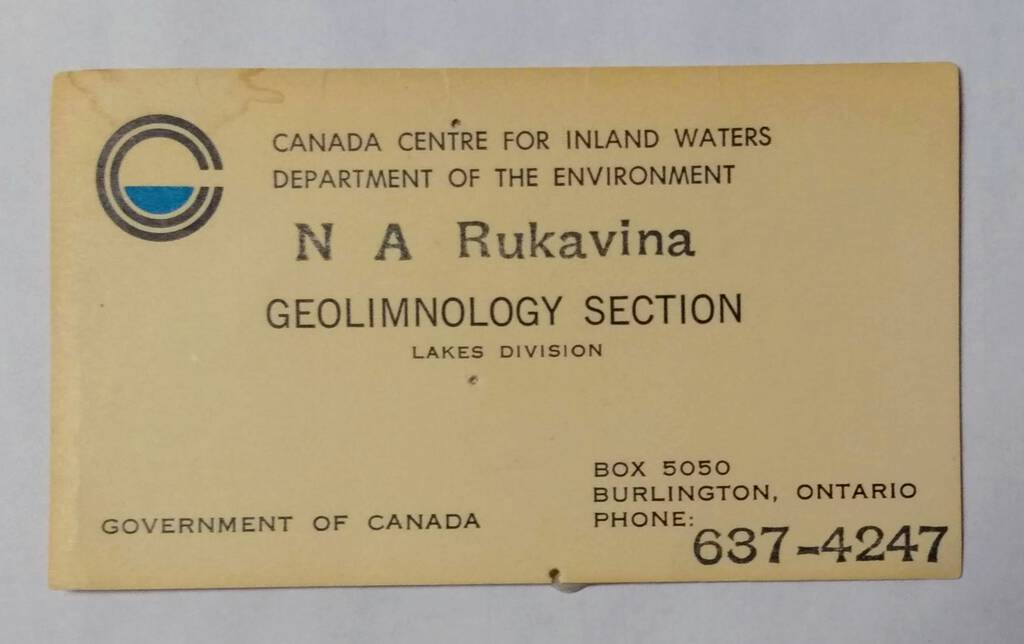
Hydraulics Division
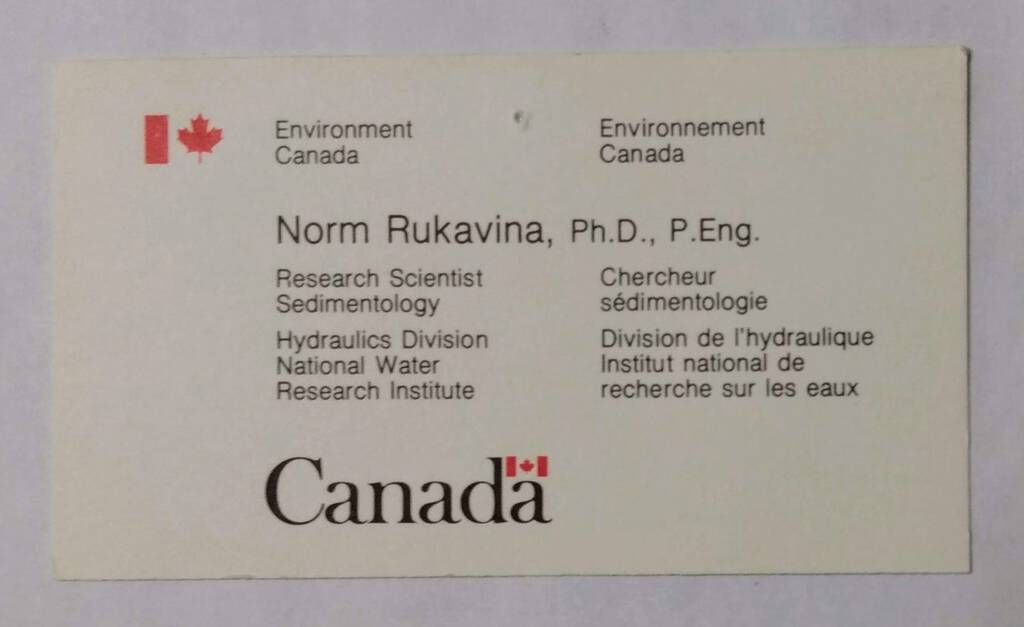
Aquatic Ecosystem Management Research Branch
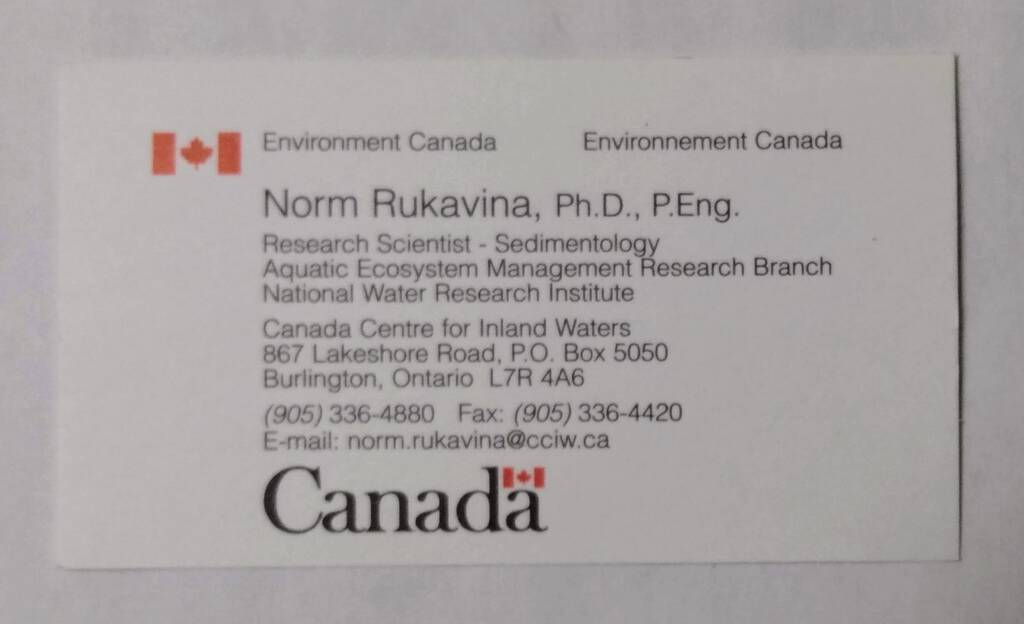
Aquatic Ecosystem Restoration Branch
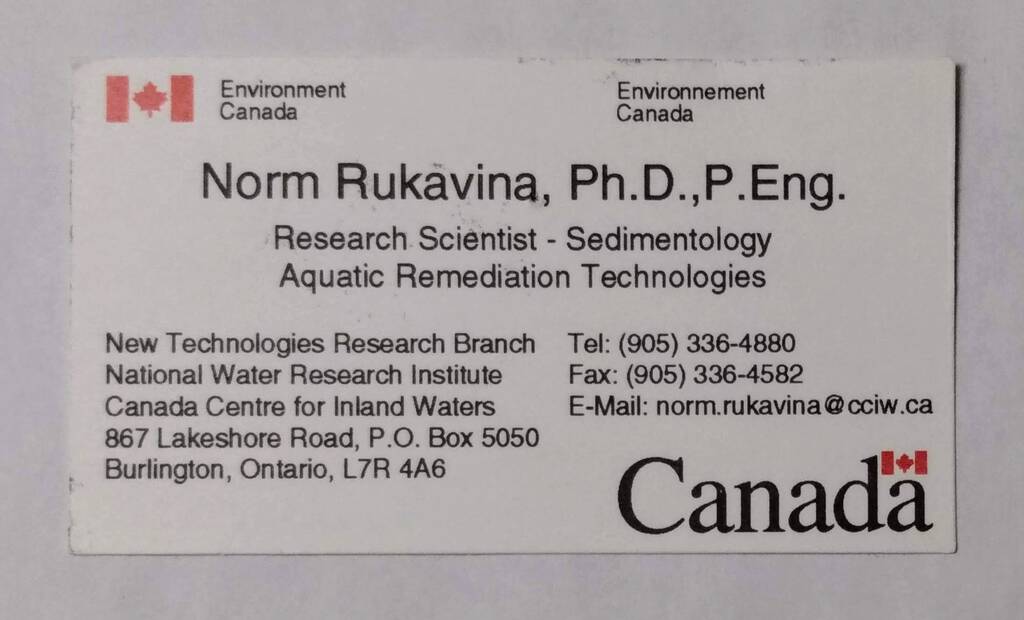
Aquatic Remediation Technologies, New Technologies Research Branch
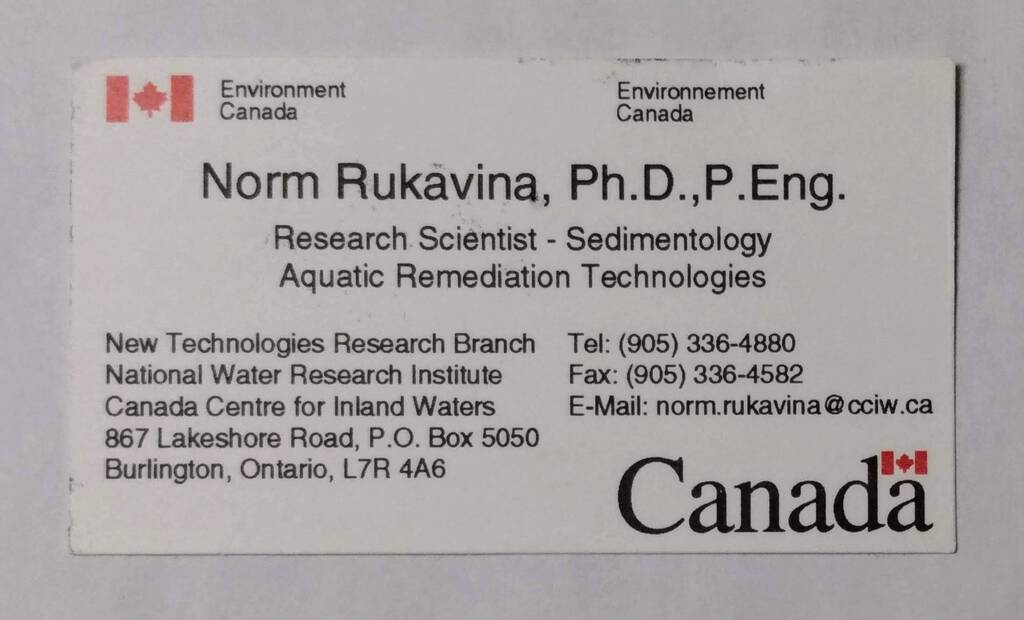
Have Computer Will Travel
When Dad and I ran Cellar Door Software together in the 1980s, we made up some business cards on a dot matrix printer, under the tag line Have Computer Will Travel:
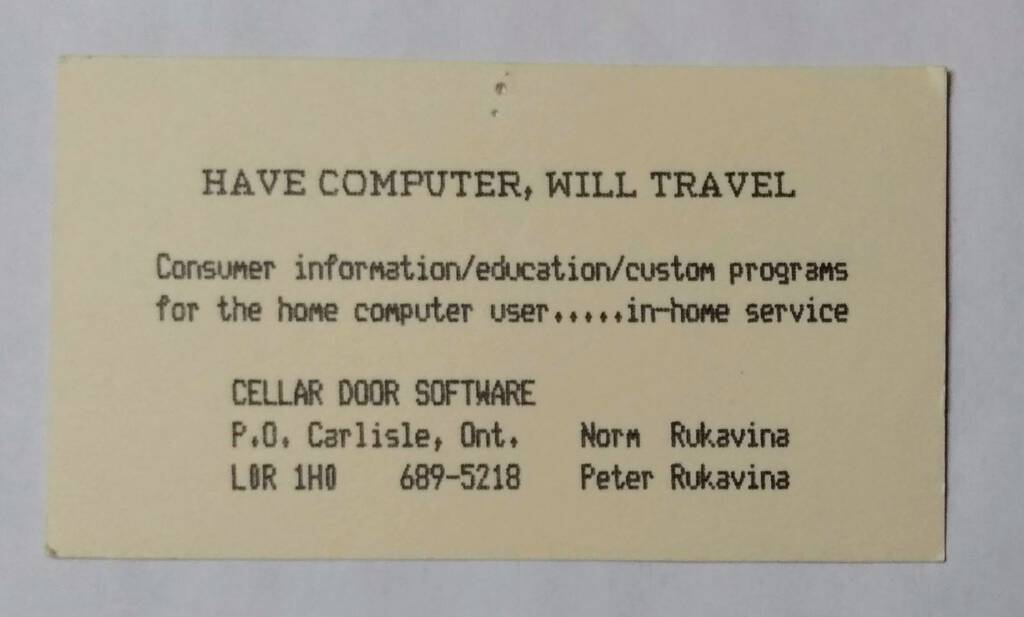
Tools
I inherited my love of having the right tool at the right time for the right job from my father. Between his workshop and his office he had the right tool for a lot of jobs, and I used the opportunity to fill gaps in my own collection.
Battery Tester
From the number of batteries of all types – AA, AAA, watch batteries, and more – that Dad had in his office, it’s obvious that he found nothing more frustrating than not having the right battery at hand when needed. This tester allowed him to gauge whether any given battery was still worth keeping around:
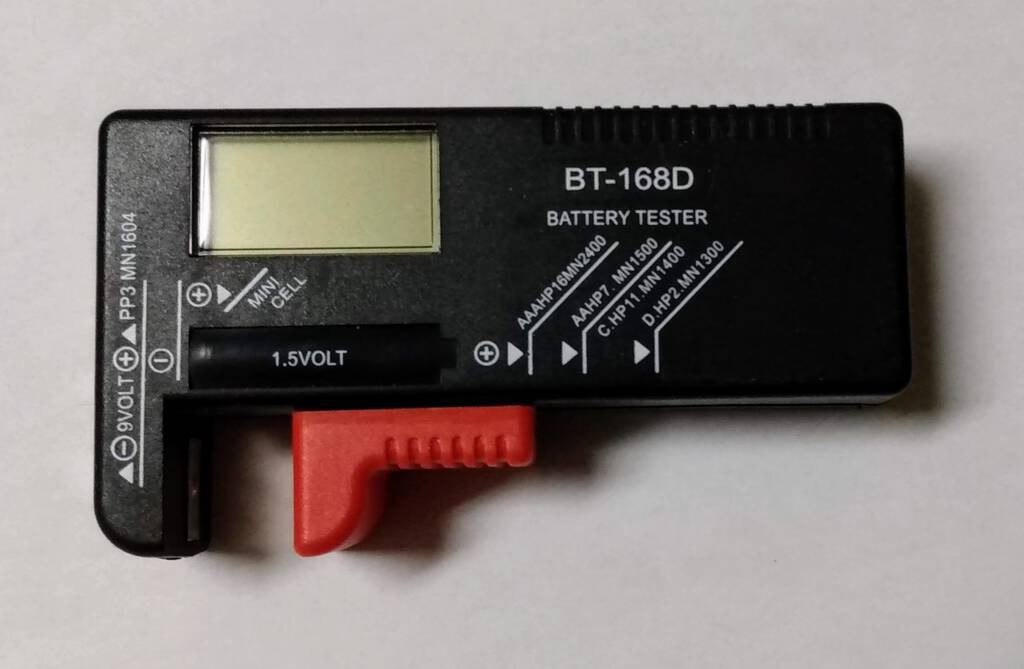
Paint Scraper
A well-equipped workshop has many scrapers, and Dad’s certainly did. I remember this one in particular, though, both for its compact design, and for using it in a summer-long effort to scrape the paint off my dresser:
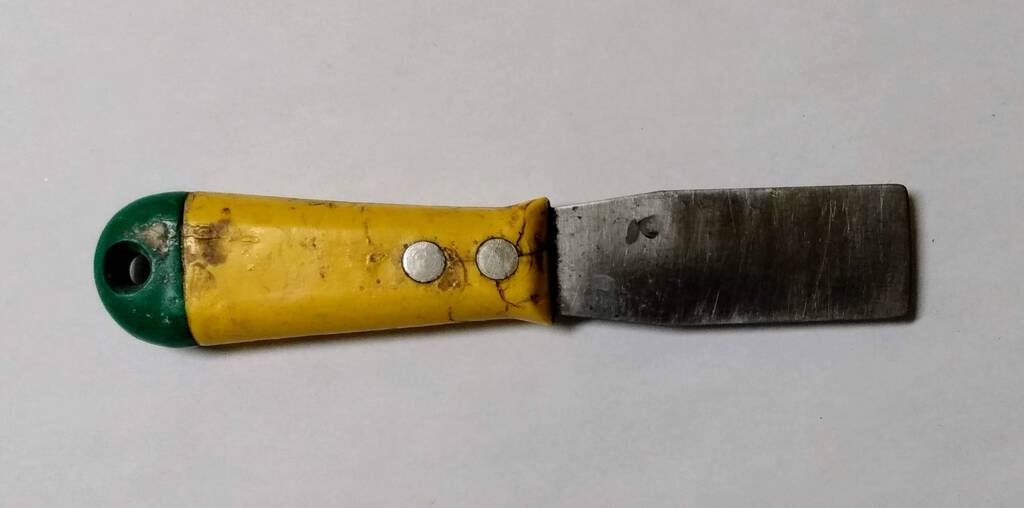
Wire Stripper
I used to marvel at Dad’s ability to use this wire stripper tool to remove just the insulation from a piece of wire, leaving the conductor itself intact. Now I can do it myself!

Sliderule
If I’m to be perfectly honest, I have no idea whatsoever what a sliderule is for, or how it works. But this beautiful, compact one in Dad’s desk drawer needed saving; its twin is in the collection of the Computer History Museum.
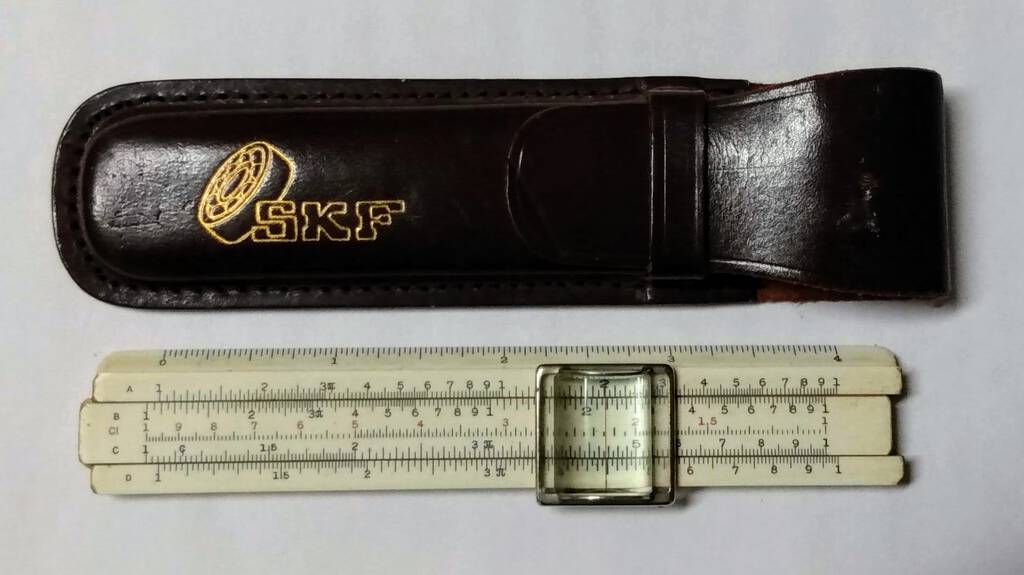
Try Square
I don’t know why, but of all Dad’s tools I have the strongest attachment to this try square:
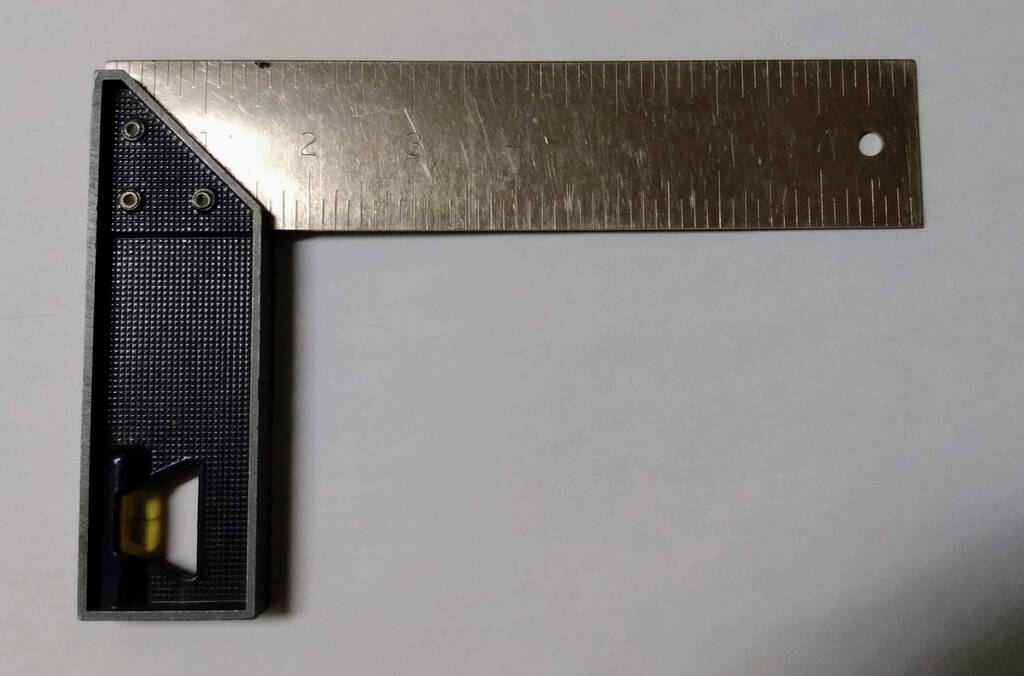
Dividers
Dad was very much of the “pay more for a well-made tool and keep it for life” school, and these dividers are a good example of that. I love the tool; I also love his printing on the box.

Magnifier
I just love everything about this tiny magnifier with its sliding metal cover.
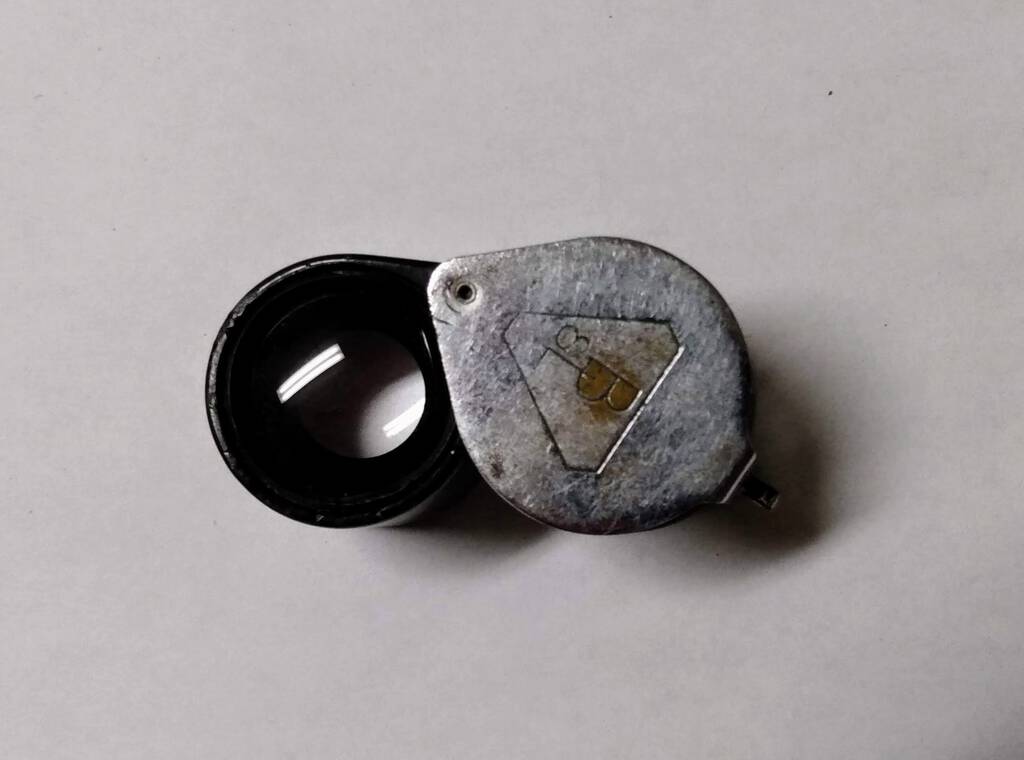
Pencil Sharpener
Pencil sharpeners these days are flimsy; this one, a model KS from the Boston Pencil Sharpener Company, is built like a tank. I’m going to mount it near the letterpress, and heretofore it will sharpen all my pencils.
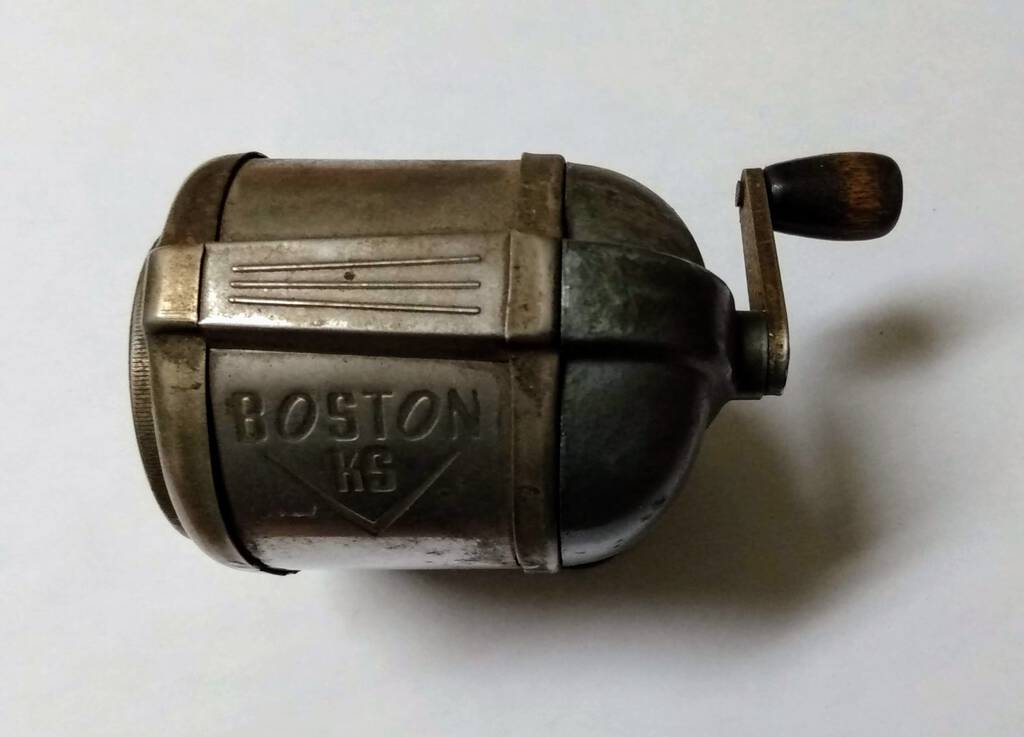
Rubber Gloves
A pair of heavy duty rubber gloves that are perfect for the wet work of letterpress. I also like the idea of holding hands with Dad.
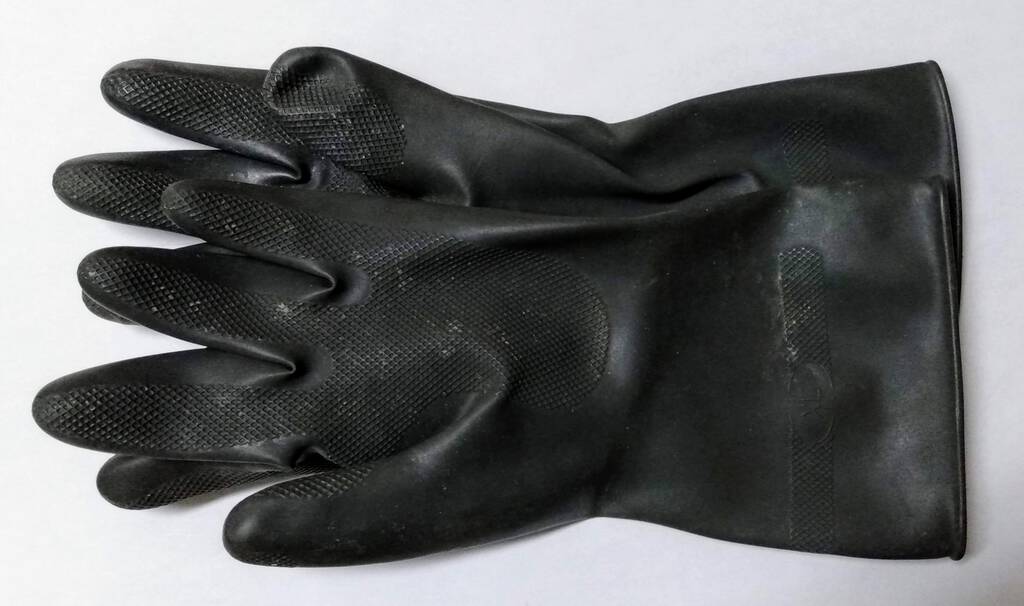
Snips
I’ve a feeling Dad might have inherited these snips from his own father: there are well-worn, but still very usable.
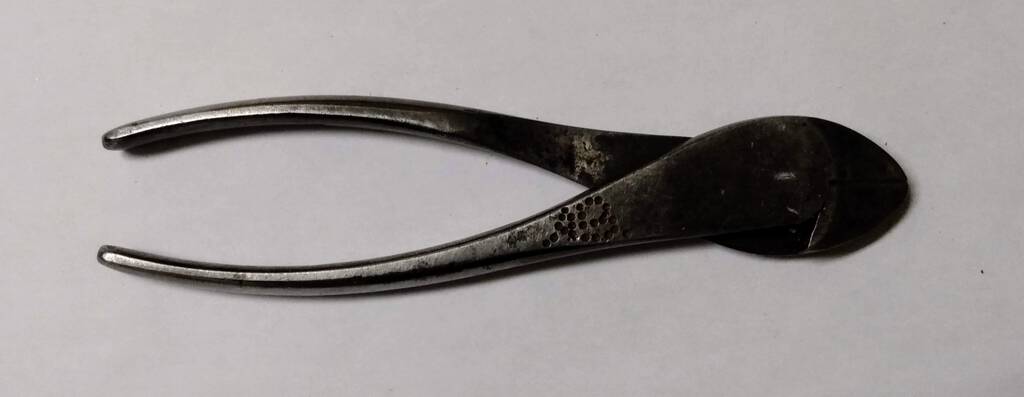
Rubber Stamps
My father and I shared a love of rubber stamps–I’ve got a whole barrel of them somewhere here in the office. These date from his days as a graduate student in Rochester, New York; the bottom one comes from C.H. Morse & Son.
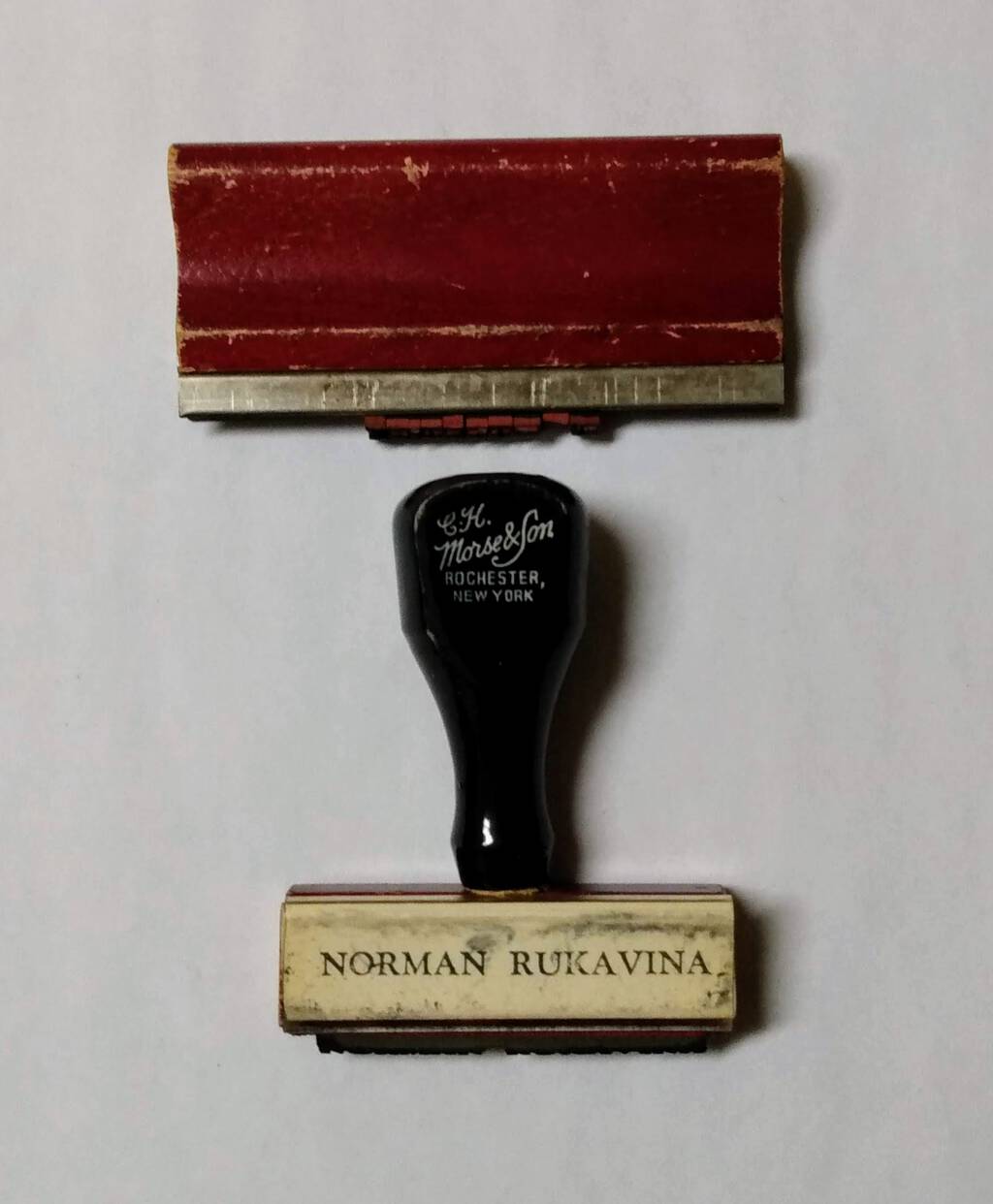
Supplies
Electrical Tape
It happens enough that it’s almost a law: when you need electrical tape you can’t find electrical tape. And so you use masking tape. Or cello tape. Or something else entirely inappropriate to the job. Now I have electrical tape.
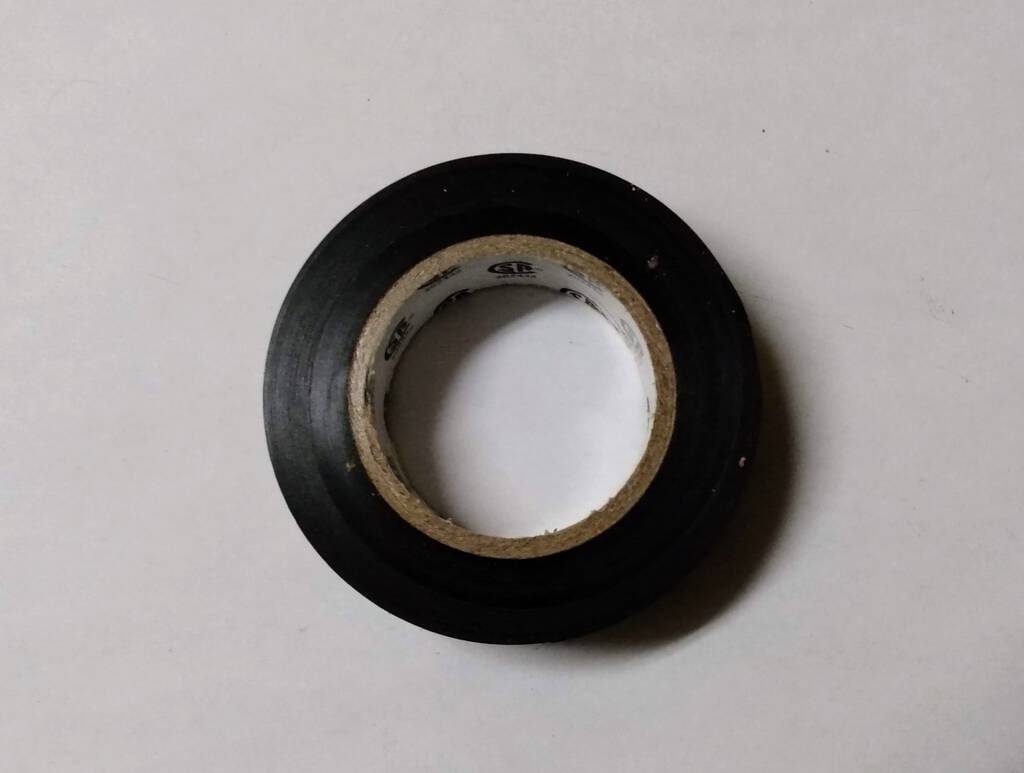
String
Dad had an entire shoe box full of string in his basement workshop, and it was all I could do to prevent myself from taking it all. But space was a consideration, so I took only the two most interesting examples. I’ll use this for tying up metal type and for bookbinding.
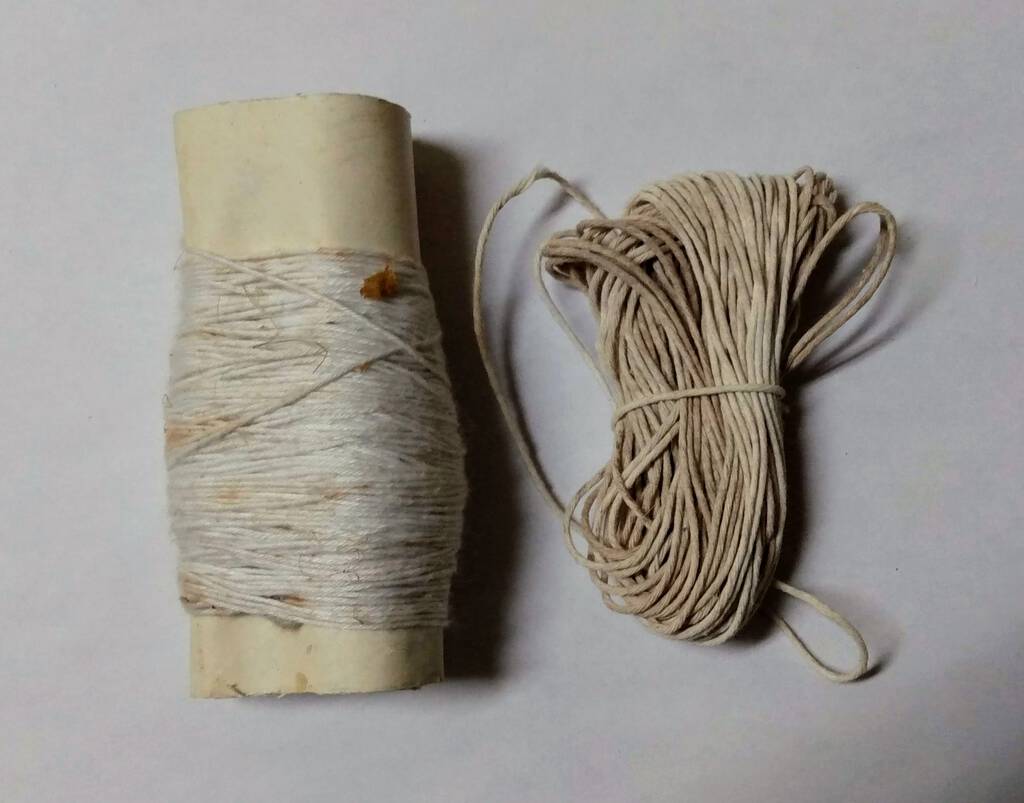
Cords and Adapters
Are these a tool? A supply? Like me, Dad had boxes and boxes filled with power supplies, extension cords, and adapters. When will I ever need a stereo-mini-male to stereo-mini-male adapter? I don’t know. But if Dad felt he needed one at the ready, I should honour this.
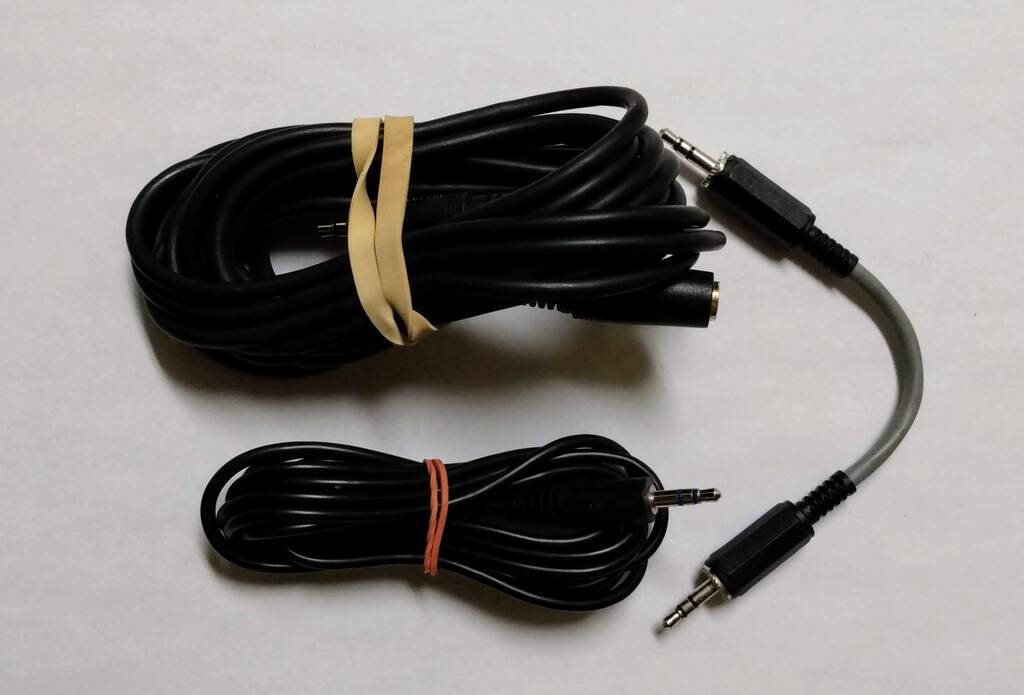
Ephemera
63
When we moved from Burlington to Carlisle in 1972, the house my parents bought was at 63 Progreston Road; sometime thereafter the street got re-numbered, and what was № 63 became № 343. Dad saved the 63. I would do the same thing in his position.

Quik-Bands Tin
Second only to a love of tools, Dad and I also shared a love of things-that-hold-other-things (I have an entire shelf with that label, filled with envelopes and boxes and pouches). This is a lovely example of a thing-that-holds-other-things, a Quik-Bands bandage tin. It now holds the aforementioned rubber stamps.
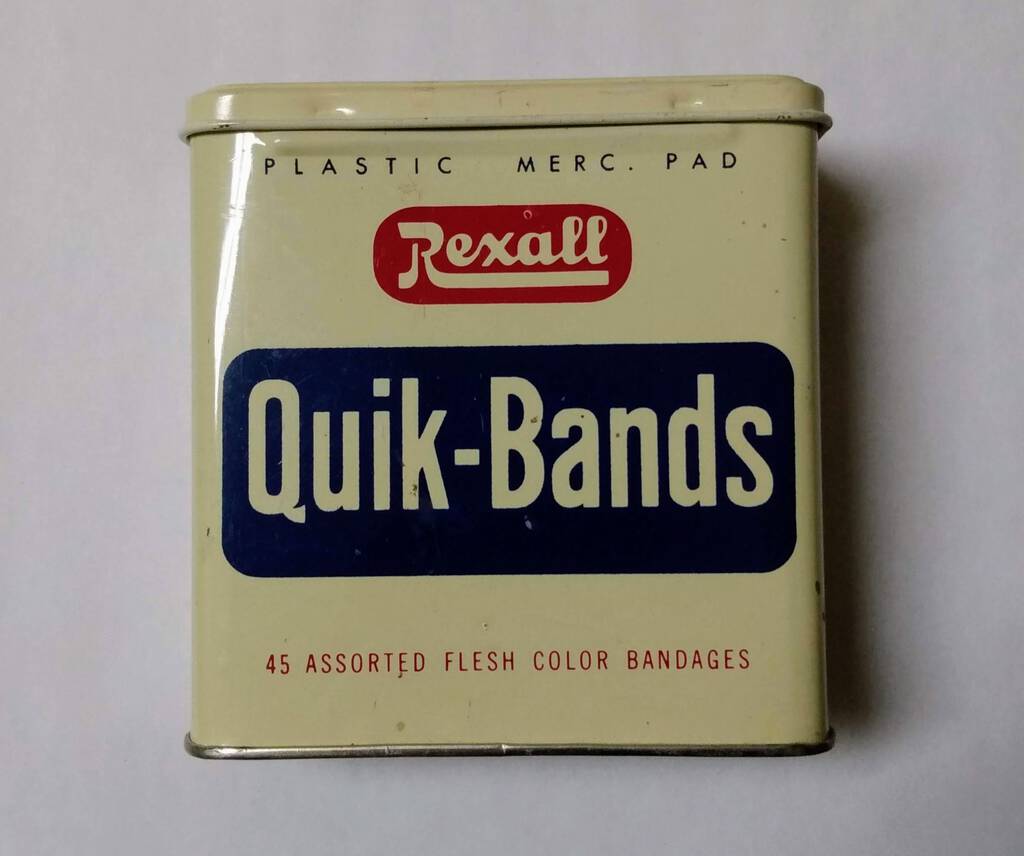
Joseph Brant Hospital Volunteer Badge
In his retirement, Dad volunteered every Friday at Joseph Brant Hospital in Burlington. His dedication to his post was such that the week he had a heart attack several years ago he phoned to apologize: “I’m afraid I won’t be able to make my shift on Friday, as I’ve had a heart attack.” This is one of his volunteer ID badges from that post.
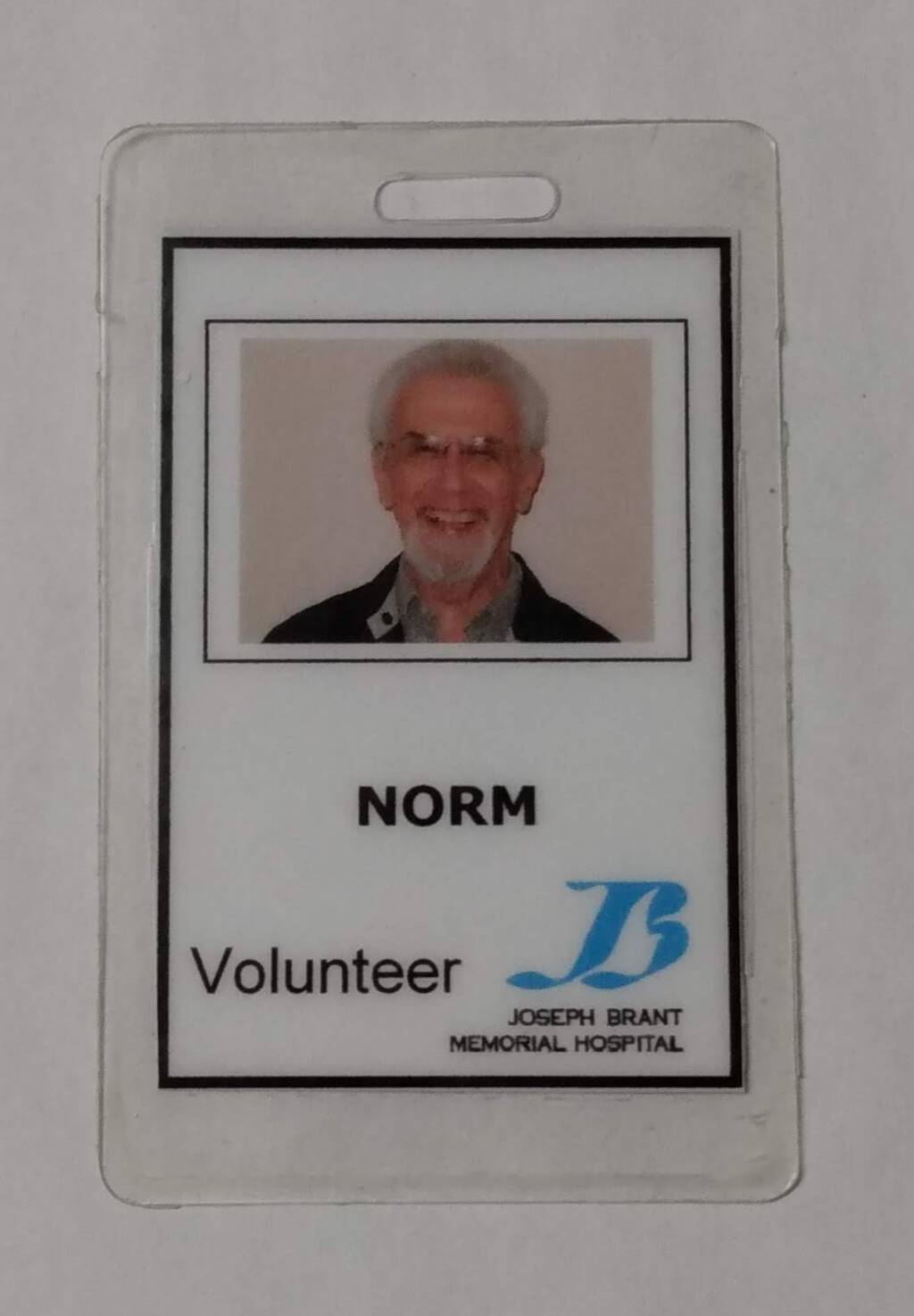
CCGL Puffin Plaque
The RoxAnn surveys that Dad and his crew conducted in the Great Lakes were done from CCGL Puffin, a survey launch (CCGL stands for Canadian Coast Guard Launch).
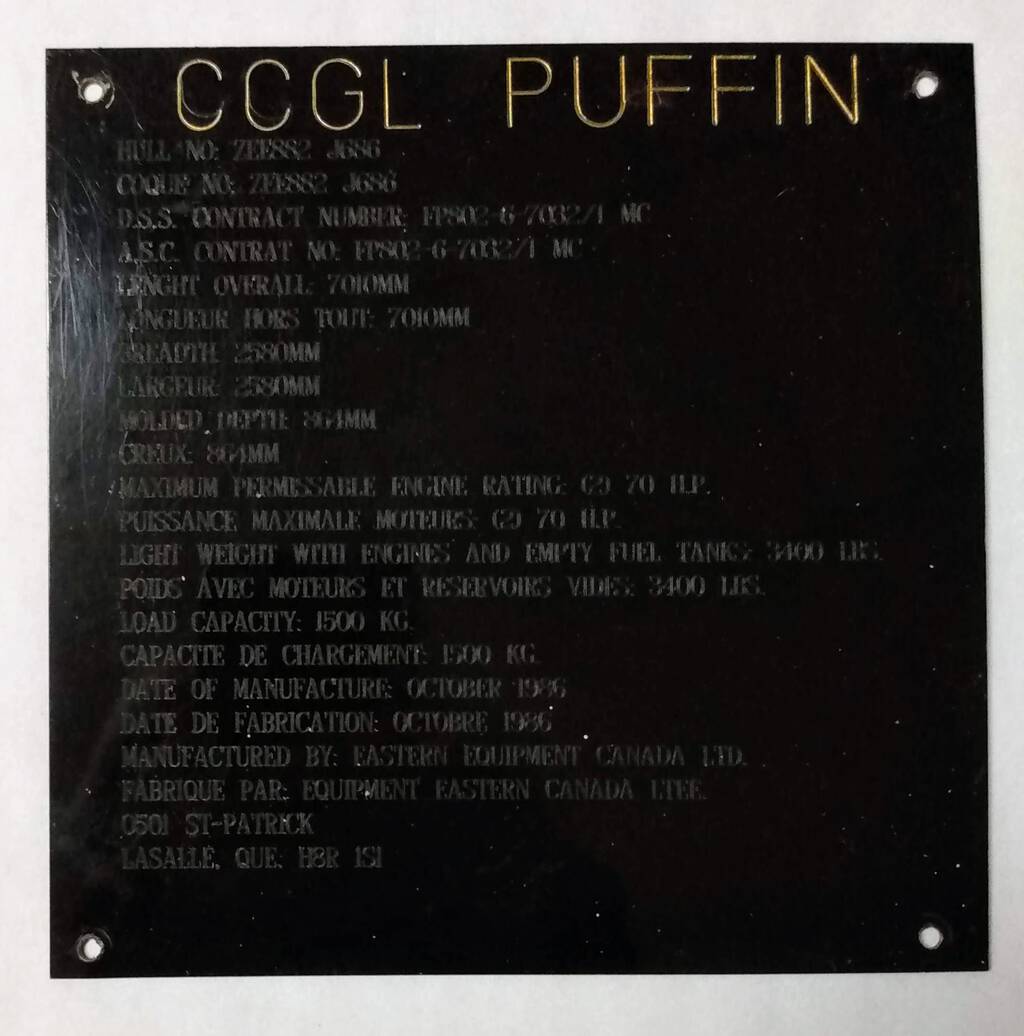
While I was pretty certain the Puffin sank, as Dad’s 2008 email about the plaque was titled “The Puffin in happier days,” word is that she’s still on the water, acting as a sort of “tow truck for boats.” The Puffin’s sister, the Petrel, is still in Coast Guard service, and is their oldest launch.
Dad included a photo of the launch with that email:
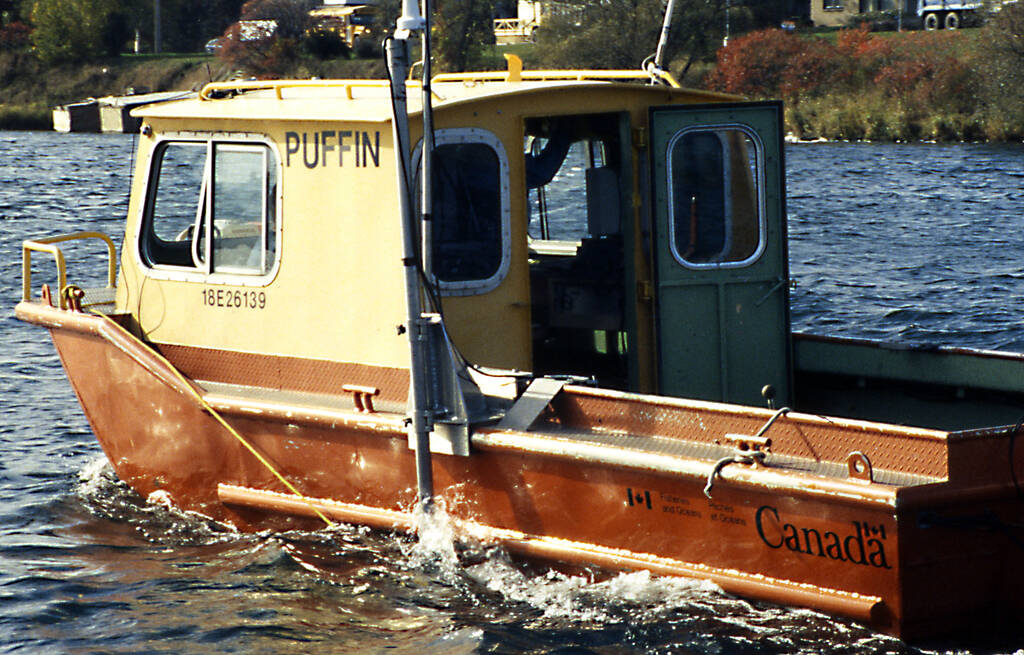
Plan Your Visit
Alas after I surveyed the collection and took photos, I dispersed the items making up The Museum of Norm into various spots in my office, ready for deployment when needed. So there’s no way to tour the collection as a whole other than virtually. But as I test batteries, tie strings, scrape paint, and wrap things in electrical tape in the weeks, months and years to come, the museum will live through me.
What are children if not museums of our parents.
It’s been a blur of a couple of weeks leading up to Christmas, and this photo I took of our Christmas supper table last night is a good visual metaphor for it all:
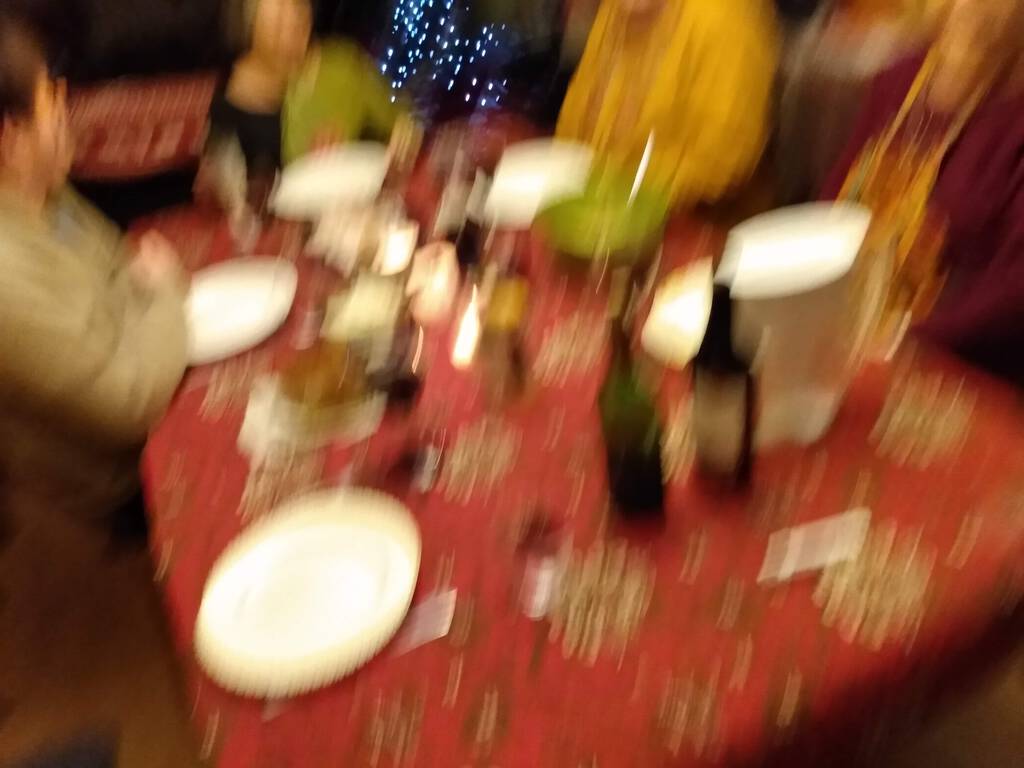
Catherine came home from a week’s hospital stay on Sunday morning; Sunday evening we celebrated the winter solstice with our friends Paul, Lori, Ila, Sosi and G., as is our tradition. We enjoyed a taco buffet and pumpkin pie (all solstices should be celebrated with tacos).
Monday morning I had a lie-in, only to realize at 9:30 a.m. that Oliver had an appointment for 10:00 a.m.; we managed to pull off a miracle of waking-showering-dressing-eating and got to the appointment only a couple of minutes late. I spent the balance of Monday at work, and finished the day getting a fleet of 2020 New Year’s Day cards in the mail.
I started Christmas Eve with a visit to the Charlottetown Farmers’ Market for coffee and a smoked salmon bagel; it was a quieter Christmas Eve market than in previous years, perhaps because it fell on a Tuesday.
From the market I went to CBC Prince Edward Island to tape a piece about the 2020 levee schedule with Mitch Cormier, and got a bonus tour of the renovations underway that will see Island Morning move to a new studio near the main entrance that, for the first time ever, will have windows to the outside.
From the CBC I went next door to Sobeys to pick up some last minute groceries for Christmas Eve and Christmas Day; for the first time ever I was the person responsible for turkey acquisition, a task that, as a vegetarian, I was uniquely unqualified for. I ended up with a 4 kg fresh turkey and fears of killing my family via Salmonella.
Oliver and I headed to Cineplex for the afternoon to join our friends Darcie and Peter and two of their boys for a matinee showing of Star Wars: The Rise of Skywalker, thus fulfilling Oliver’s dream of having a Green Christmas event (the effort started in early December with him calling a meeting for me, Catherine and Darcie to come up with something; I was very proud of him for managing this).
On the way from Star War’s to Darcie and Peter’s house for supper we dropped in at our house to pick up the German potato salad I’d made earlier in the day, only to be greeted by Catherine’s mother Marina, who arrived stealthily from Ontario by train without any of us having the slightest idea she was coming. A Christmas miracle (generously facilitated, and kept completely secret, by our friend BJ).
We enjoyed vegetarian meat pie, glazed carrots and the aforementioned potato salad for supper, and then quickly piled home to organize the house for Christmas morning.
Christmas morning started very, very early: Oliver set his Google Home to start holiday blasting music at 5:00 a.m., with reminder klaxons at 6:00 a.m. and 7:00 a.m.
I fetched Marina from BJs, we opened our stockings, had breakfast, opened our presents, and had a lunch of potato pancakes. In the midst of all that we had a mega-chat, organized by Oliver, on FaceTime with my mother and with brothers in California and Ontario.
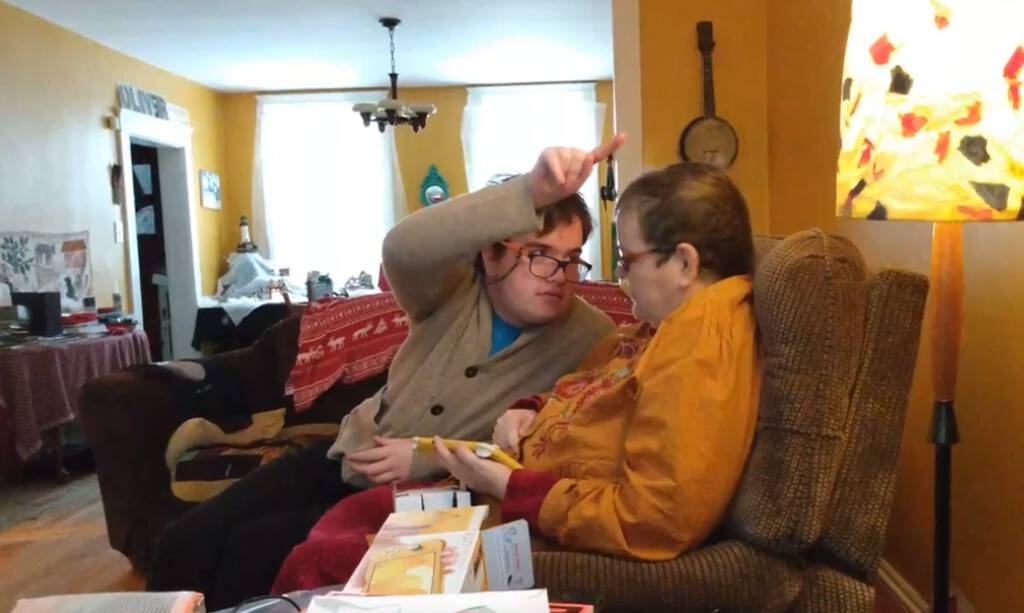
With Marina in the house I was saved the task, for another year, of having to learn how to cook a turkey. I was her sous chef, though, and came to understand the broad strokes; good grounding for future years.
Around 5:00 p.m. we were joined by friends J. and G., and we enjoyed a supper of turkey, potatoes, stuffing, and turnips, with ice cream and Marina’s fruitcake for dessert.
Christmas Day ended around 9:00 p.m. with Marina off to BJ’s, Catherine and Oliver off to bed, and me, in the quiet of the snowy evening, wrapped in a blanket reading about the history of left-wing direct action and playing Fortnite on the Nintendo Switch Lite that Oliver and Catherine received for Christmas.
It may all have been a blur, but, in the end, it was a good blur.
My autistic son made me see the season anew – a Christmas tree is not a fish!:
I remember on the way home from nursery one December day, my son pointed at a small plastic fish in a charity-shop window. In the next window, I showed him a Christmas tree, and, in a phase when he was obsessed with defining things negatively, according to his own idiosyncratic system of what they were not, he replied: “It’s not a fish!” For at least two more years, every time we saw a Christmas tree one of us would say: “It’s not a fish!” and fall about laughing. I know, the levels of you-had-to-be-there are off the scale, but this is the way with autism. It’s hard to explain, and highly specific. The point is, even with all the challenges – and there are many – if you just open the door of your mind to autism, the world is reborn. And it’s incredible.
Exactly.
I have a 3/8 inch hole punch; it looks like this:
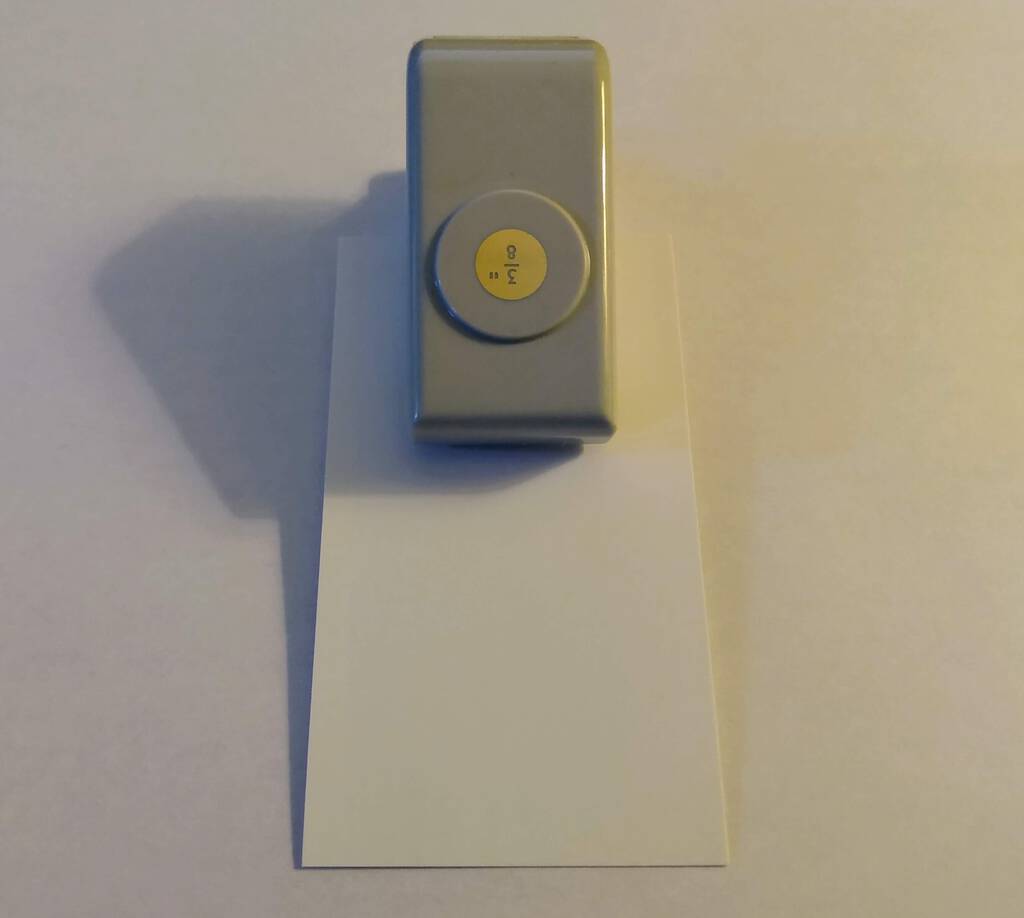
I want to use the punch to make holes in business cards; there are two problems with this setup as-is:
- There’s no way to ensure that the holes I punch are centred horizontally on the cards.
- There’s no way to control the vertical distance from the top of the cards that the hole gets punched, other than pushing the card all the way into the punch.
I want my holes to be centred and about 1/8 inch from the top of the cards, but because of these limitations, the best I can do is eyeball the horizontal centre and get holes about 1/2 inch from the top, like this:
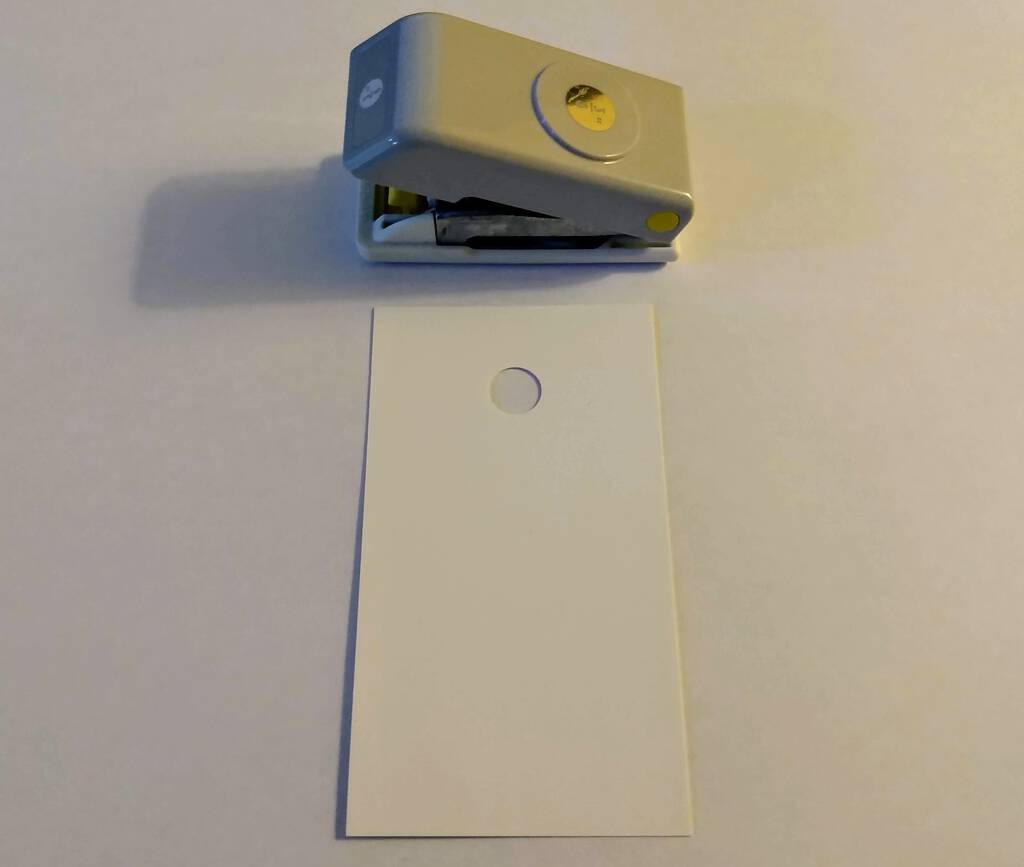
Clearly what I need is a “jig,” a device to wrap around the hole punch to solve both problems.
To the 3D printer!
I designed a jig in Tinkercad with a slot for the hole punch and guides for a business card:
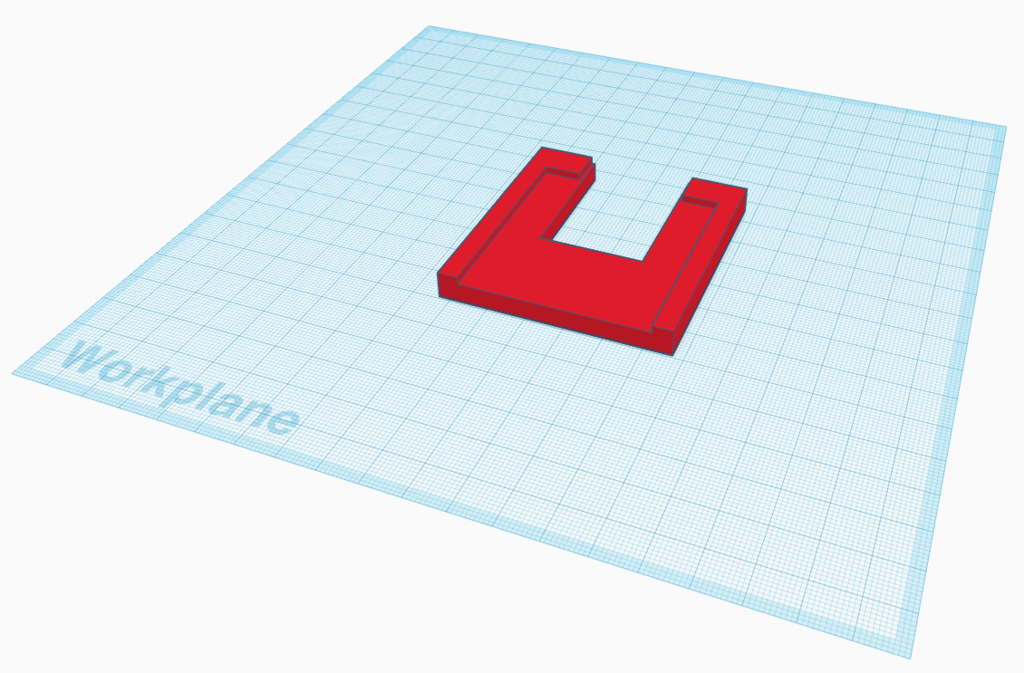
The design took just over 2 hours to print on my Monoprice Select Mini 3D printer:
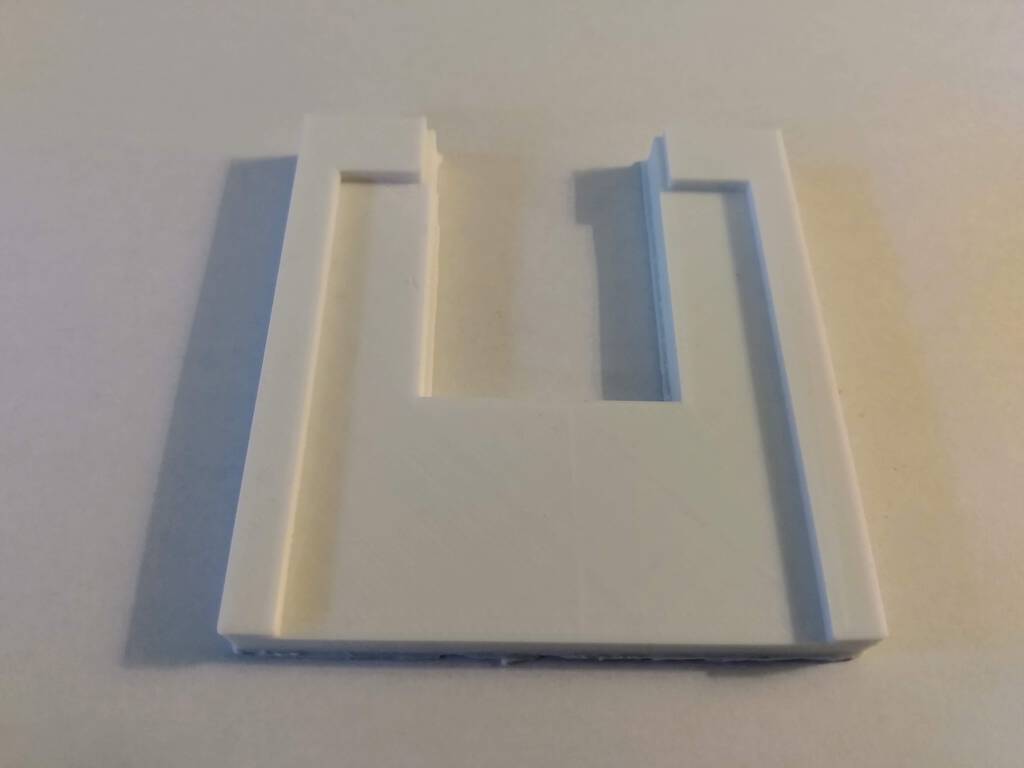
With the hole punch inserted, and a business card ready to punch, it looks like this:
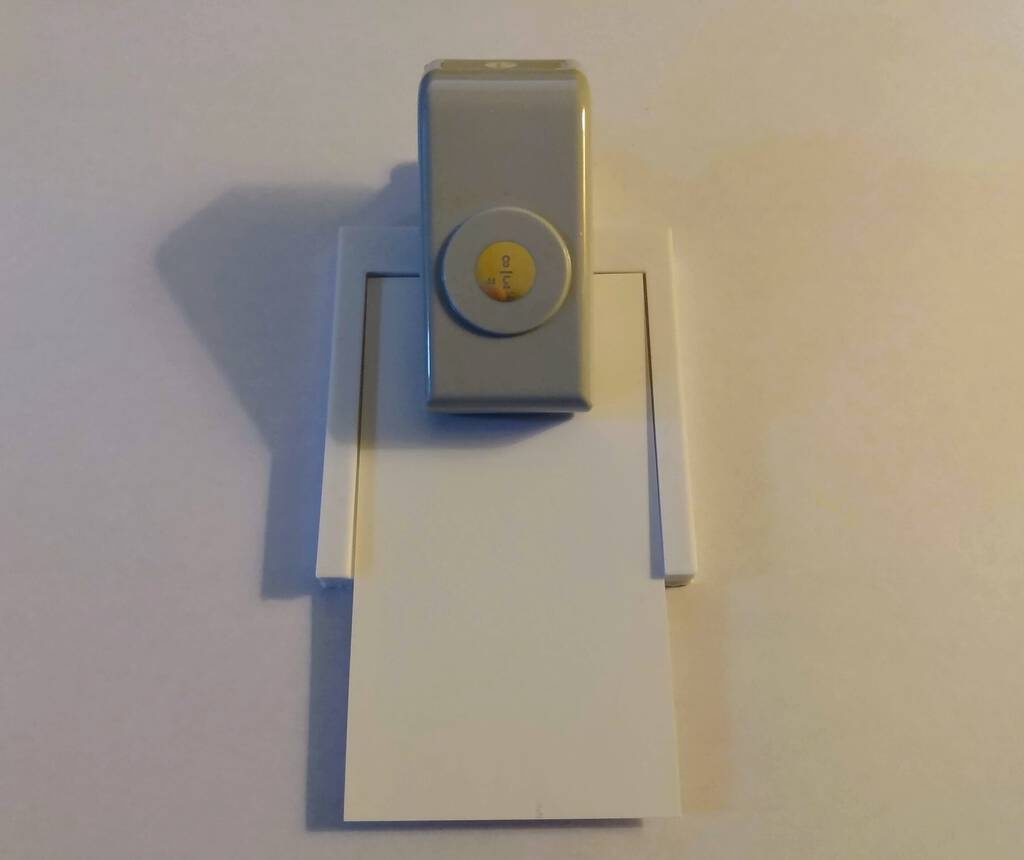
And it works!
Here’s a perfectly-punched hole:
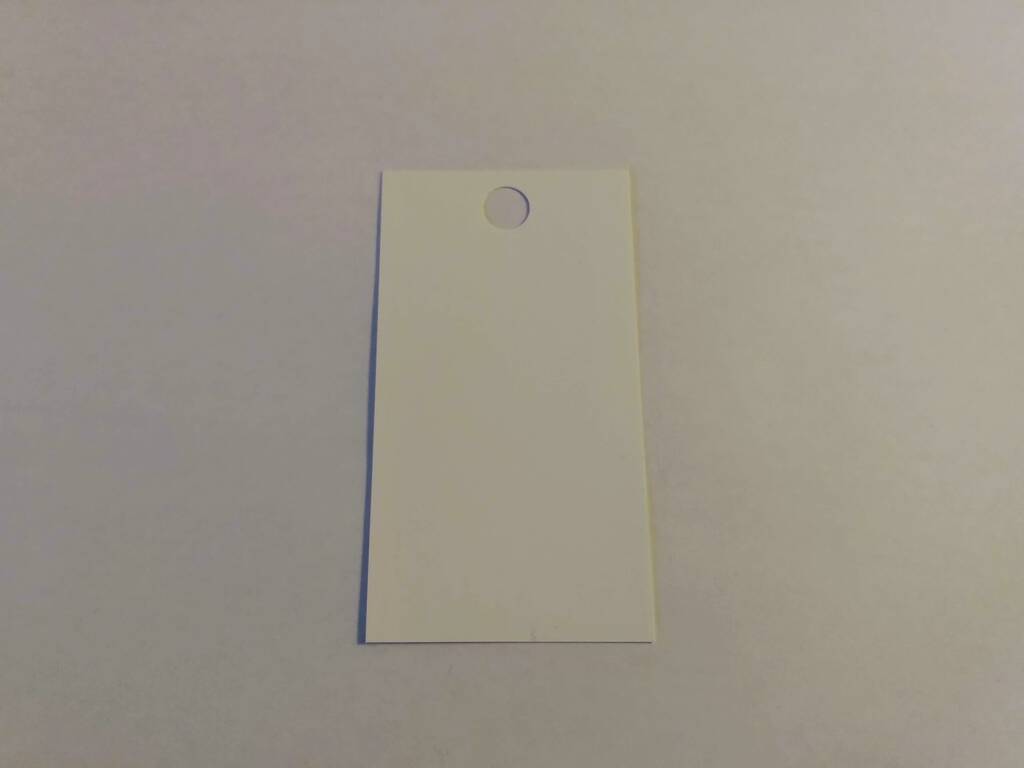
Now I’m off to punch lots of perfect holes in lots of cards for a New Years card project I’m working on.
At the November meeting of the PEI Electric Vehicle Association there was considerable discussion about matters related to electricity and our provincial utility, Maritime Electric.
While it’s always good to hear people talking about the source and use of energy, I was dismayed that much of the discussion was based on assumptions and half-truths, and I resolved, at the end of the meeting, to see what I could do about getting electric vehicle owners and Maritime Electric in the same room.
This effort came to fruition last night as an overflow crowd packed into the company’s boardroom for a wide-ranging discussion of the province’s electricity future, and where Maritime Electric and electric vehicles fit into it. Maritime Electric’s formal presentation was scheduled to last 15 minutes; it stretched over 2 hours as we all chimed in with questions and suggestions.
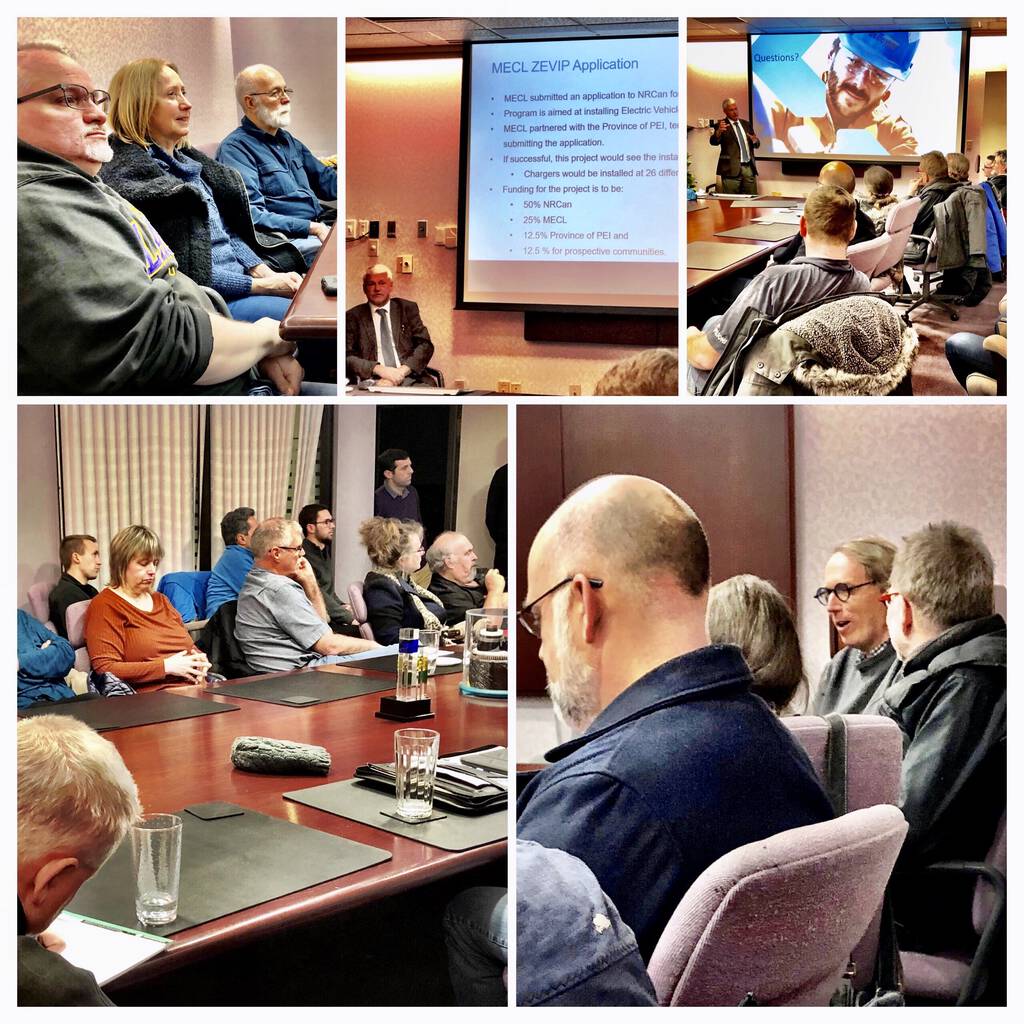
While I learned a lot last night, by far and away the most interesting and useful information I learned was:
- Electricity purchased from the mainland–about 60% of PEI’s needs–has an estimated CO2 content of 0.3 kg/kWh.
- When the 25% of electricity generated by on-Island wind is factored in (about 25% of the total), the overall content of the electricity supply is 0.2 kg/kWh of CO2.
These numbers are interesting and useful because they allow me to much more easily calculate the average carbon impact of my electricity consumption:
- For example, today at 100 Prince Street we’ve used 2.48 kWh of electricity so far; at 0.2 kg of CO2 per kWh, that’s 0.496 of CO2 emitted today to toast our bread, start up the furnace, charge our devices, power the TV, run the lights.
- Over the last 5 years, we’ve averaged 14.56 kWh per day of electricity usage in our house, or a total of 5,314 kWh per year; that consumption translates to just over 1 tonne of CO2, or 333 kg per year for each member of our family. This in the context of the annual climate budget for each person on Earth being 2.3 tonnes per year.
- This week our Kia Soul EV has been averaging 18 kWh/100 km; that translates to 3.6 kg of CO2 per 100 km driven.
Beyond what I learned about emissions and transmissions and generation last night, the most heartening aspect of the meeting was that in one room, on a cold winter’s night on PEI, we had our electric utility, the province’s manager of energy policy and programs, two MLAs from the Official Opposition, and, depending on how you count, about 1/3 of the electric vehicle owners on the Island. I’d hazard a guess that getting a group together like this is only possible on Prince Edward Island, and it was wonderful to be a part of that.
From Matt Haughey, a guide to creating a QR code for your wifi network that visitors with mobile phones can scan to get immediate access without needing to enter your fiddly password.
He points to qifi.org as an easy tool for doing this, and I can confirm that it does what it says on the tin.
If you preemptively generate a QR code for your home network, imagine the confusion and intra-family strife you can avoid from trying to find the chit with the password, and then the resulting “no, that’s an L, not an I” and “not a bracket, a paren!”
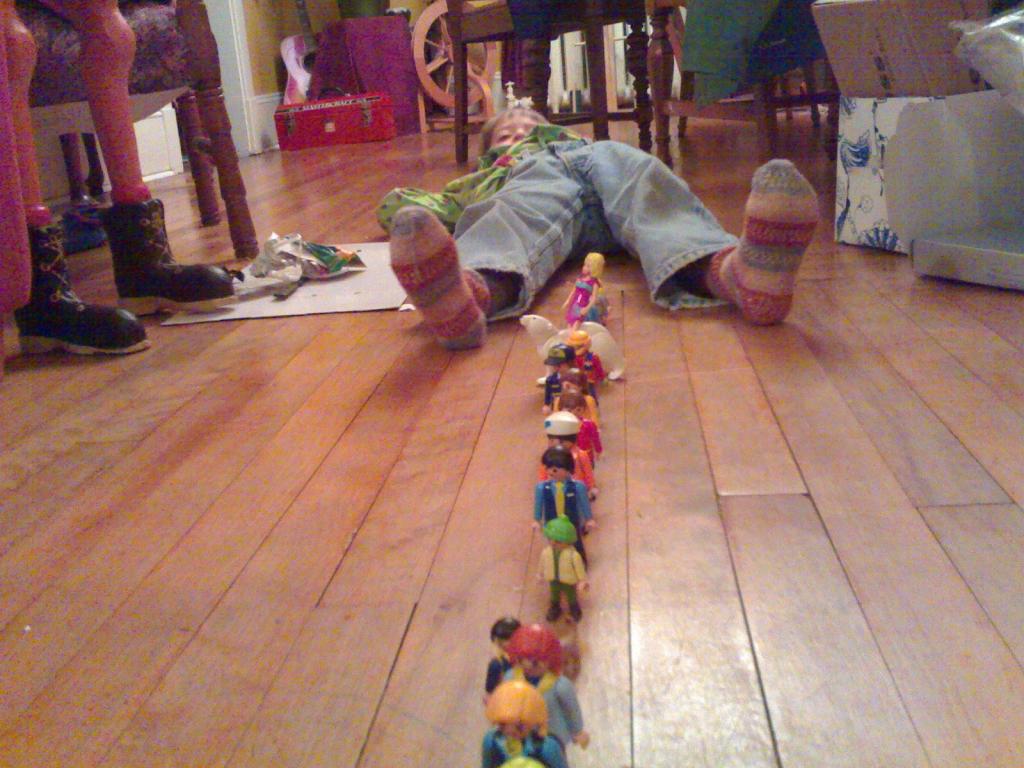
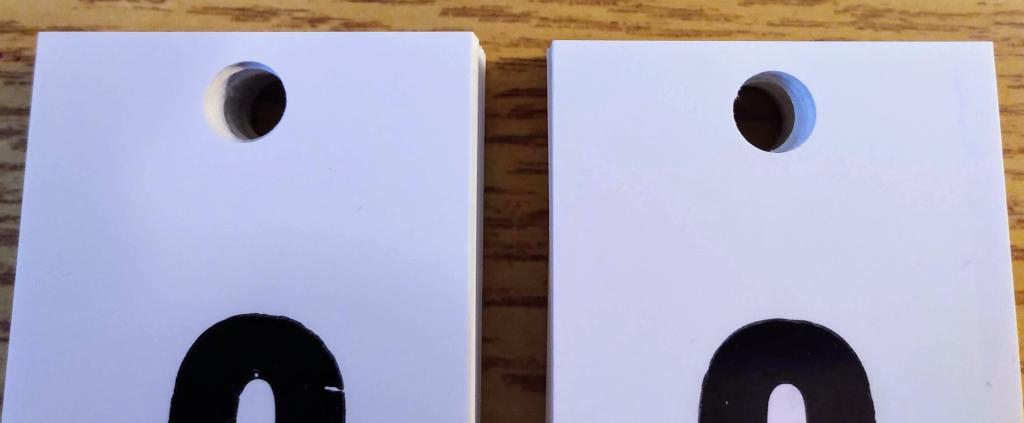
 I am
I am